
Image: Shutterstock
About This Quiz
Most people can guess the name of at least a few birds when they see them, but 98% of people can't guess these 50 bird species from just one image. Can you? Prove it and then challenge your friends!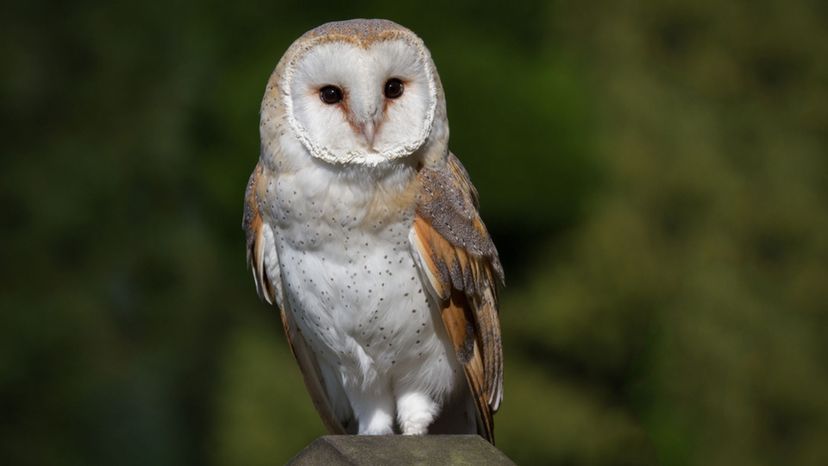
Shutterstock
Which bird corresponds with this image?
Barn Owl
The barn owl was voted Britain's favourite farmland bird by the public in an RSPB poll in July 2007. The barn owl's heart-shaped face collects sound in the same way as human ears. Its hearing is the most sensitive of any creature tested. It's not uncommon for barn owl chicks in the nest to feed each other.
Maui Parrotbill
Loon
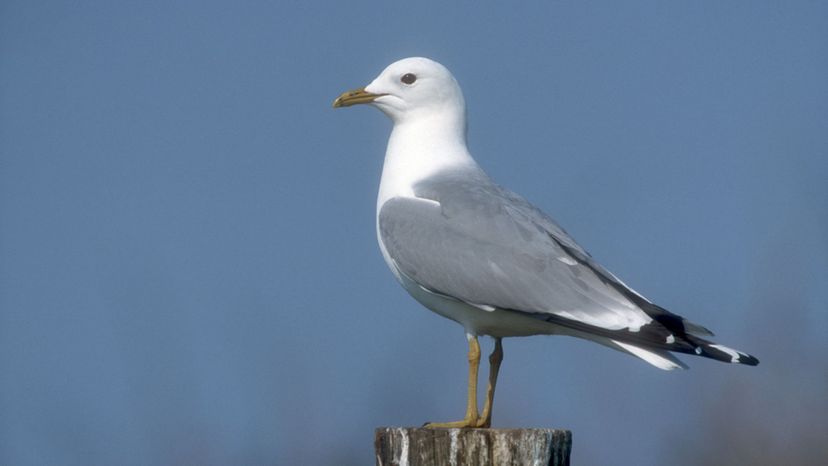
Shutterstock
Which bird corresponds with this image?
Lanai Hookbill
Common Gull
The common gull is a medium-sized gull which breeds in northern Asia, northern Europe and northwestern North America. Young birds have scaly black-brown upper parts and a neat wing pattern, with grey legs. It is 2-3 years before they reach maturity. Their call is high-pitched.
Arctic Tern

Shutterstock
Which bird corresponds with this image?
Sage Sparrow
Yellow Cardinal
Quail
Quails bathe in the dust to eliminate pests from their feathers and to keep their plumage clean. Chicks of most quail species are precocial. That means that baby birds are well developed and ready to leave the nest and follow their parents shortly after birth.
Advertisement
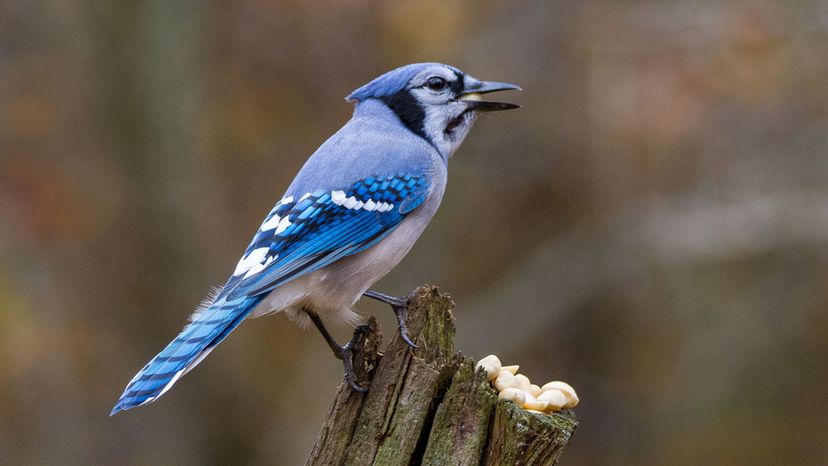
Shutterstock
Which bird corresponds with this image?
Olive Sparrow
Jay
Jays are omnivores, but they mainly stick to vegetation, berries, acorns, and other things like that. They are infamous historically for being loathed egg eaters of other birds, but this behavior is actually quite rare for them. Bluejays are very aggressive and territorial.
Rufous-naped Brush-Finch
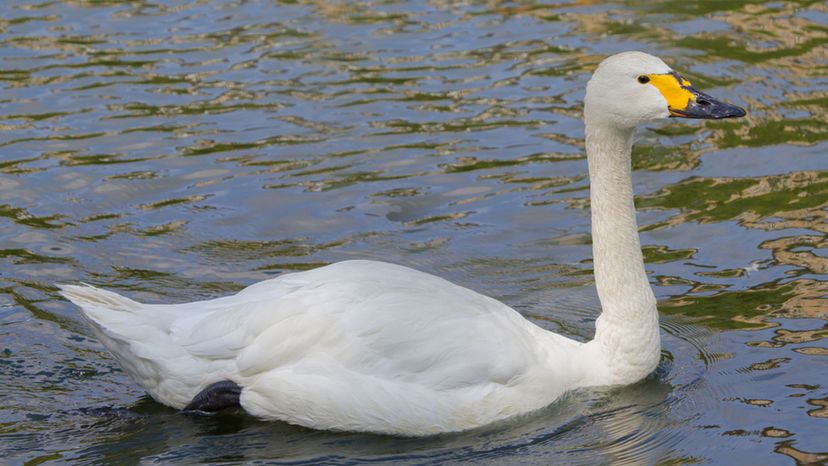
Shutterstock
Which bird corresponds with this image?
Robin
Bewick's Swan
The Bewick's swan is one of the most established winter visitors to the United Kingdom. There are up to 9,000 of these birds migrating there each year. Bewick's swans mate for life, and during the breeding season the female will normally lay five eggs. Their incubation period is just over four weeks.
Hawaii Creeper

Shutterstock
Which bird corresponds with this image?
Moriche Oriole
Mallard
The mallard ducklings are almost exclusively insect eaters, only turning to a mainly vegetarian diet as they get older. These birds don't feed their brood - the babies are able to find their own food as soon as they leave the nest. Only the female duck quacks.
Troupial
Advertisement
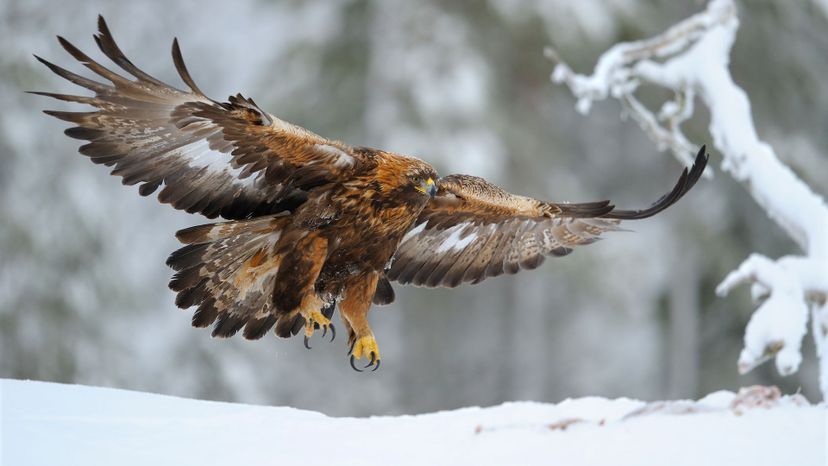
Shutterstock
Which bird corresponds with this image?
Golden Eagle
The golden eagle is North America's largest bird of prey. It can grow to a length of 3 feet, with a wingspan of 6 to 7 feet. The golden eagle is found throughout the Northern Hemisphere in mountainous areas, canyon lands, riverside cliffs and bluffs, and anywhere the rugged terrain creates frequent updrafts.
Black-cowled Oriole
Oriole Blackbird

Shutterstock
Which bird corresponds with this image?
Raven
In captivity, ravens can learn to talk better than some parrots. They are very good at imitating wolves or foxes, to attract them to carcasses that they can't break open. The ravens get the leftovers. Ravens have been involved in many mythical stories.
Warbler
Serin
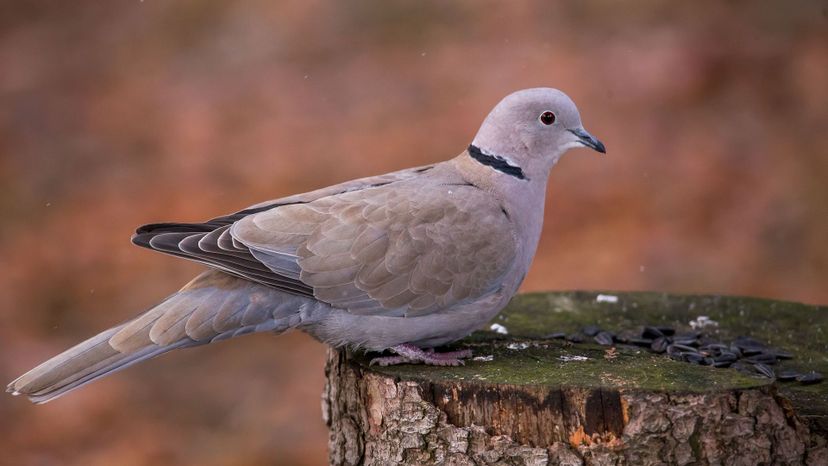
Shutterstock
Which bird corresponds with this image?
Collared Dove
There are several species of African doves that look very similar to the collared dove, including the ring-necked, red-eyed, and African mourning doves. They like to feed in company: flocks of up to 10,000 have been recorded in Hungary.
Grey Bunting
Lincoln's Sparrow
Advertisement
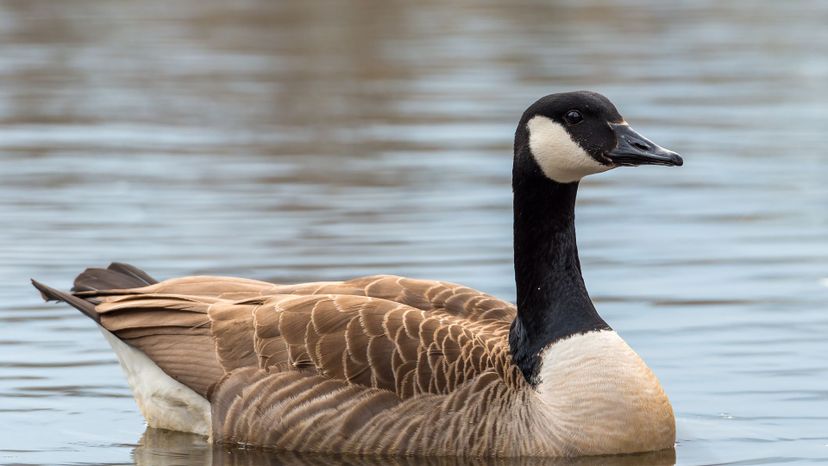
Shutterstock
Which bird corresponds with this image?
Palila
Gold-naped Finch
Canada Goose
Canadian geese have a long lifespan. Some can live up to twenty four years in the wild. However, most die within the first year of their life because of predators. Birds are considered the most successful vertebrates. They outnumber mammal species twofold.
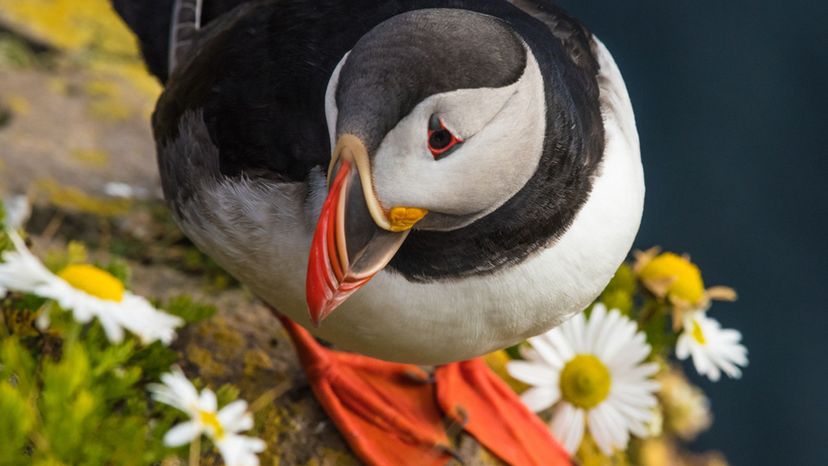
Shutterstock
Which bird corresponds with this image?
Warbler
Puffin
Atlantic puffins are excellent fliers. They flap their wings at up to 400 beats per minute and can reach speeds of 88 km/h (55mph). The birds' colorful bills and feet, which fade in the winter and brighten in the spring, help puffins analyze and determine potential mates.
Black-eared Seedeater
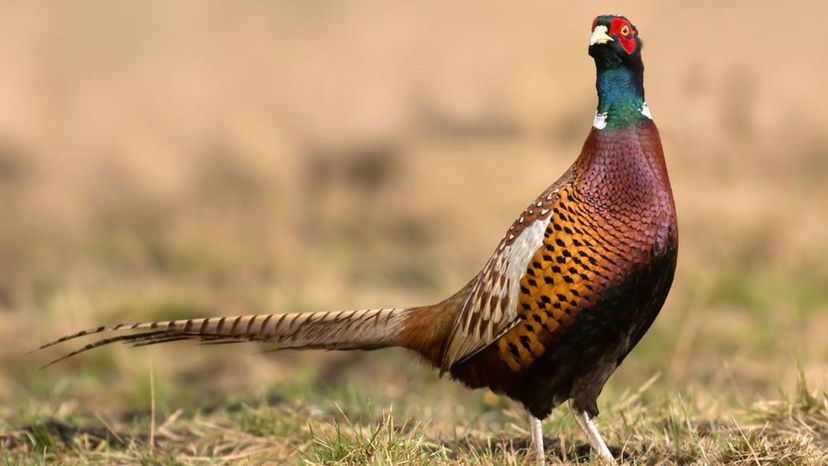
Shutterstock
Which bird corresponds with this image?
Pheasant
Pheasants are not migratory birds. They stay in their roosts during the cold weather. Pheasants can run at the speed of 8 to 10 miles per hour and fly at the speed of 35 to 45 miles per hour. Pheasants can also swim.
Pink-tailed Bunting
Yellowhammer
Advertisement
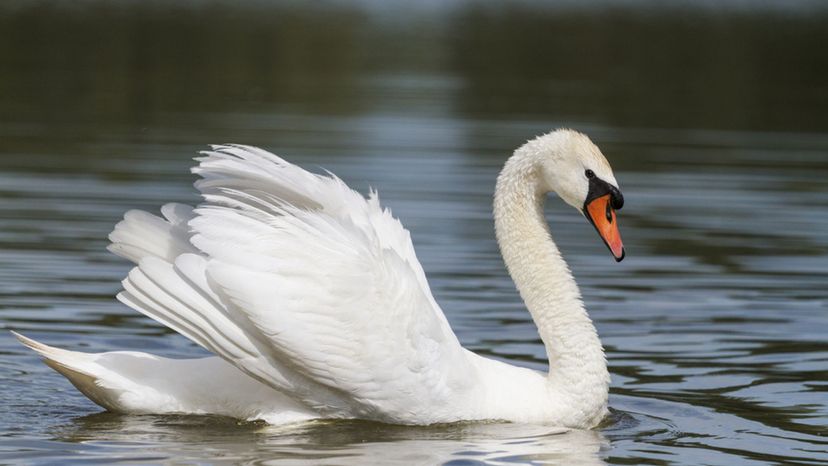
Shutterstock
Which bird corresponds with this image?
Mute Swan
The exotic mute swan is the elegant bird of Russian ballets and European fairy tales. This swan swims with its long neck curved into an S and often holds its wings raised slightly above its back. Mute swans are not native to North America.
Buff-throated Saltator
Blue Bunting

Shutterstock
Which bird corresponds with this image?
Dipper
The Dipper is a smallish but chunky bird that lives near western streams. In fact, the American Dipper is North America's only truly aquatic songbird. It catches all of its food underwater in quick streams by swimming and walking on the stream bottom.
Desert Finch
White-rumped Seedeater
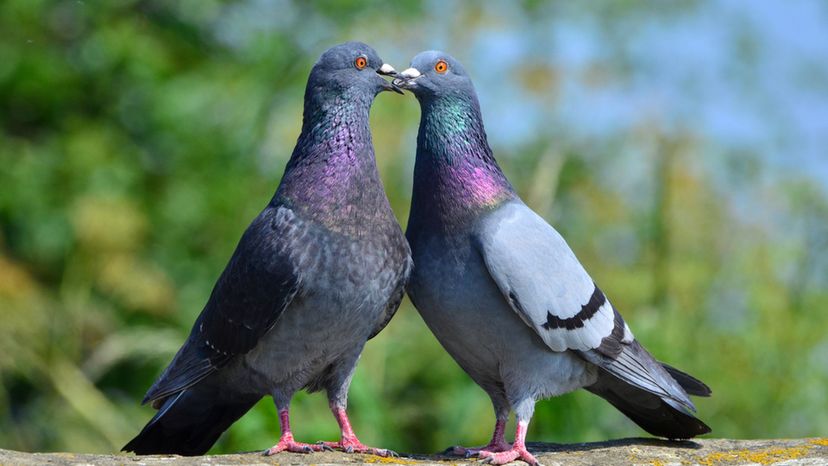
Shutterstock
Which bird corresponds with this image?
Feral pigeon
The first images of pigeons were found by archaeologists in Mesopotamia (modern Iraq), dating back to 3000BC. To ancient peoples a white pigeon was miraculous. They were widely worshiped and considered to be sacred.
Akekee
Yellowhammer
Advertisement
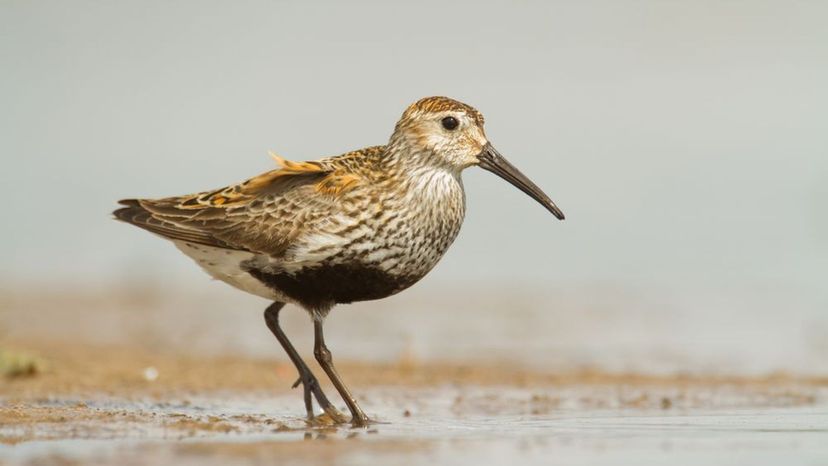
Shutterstock
Which bird corresponds with this image?
Rosy-Finch
Antillean Siskin
Dunlin
The Dunlin is a shorebird around the world. Its bright reddish back and black belly, and long, drooping bill, distinguish it from nearly all other shorebirds. It breeds across the top of both North America and Eurasia, and spends winters along coasts around the Northern Hemisphere.
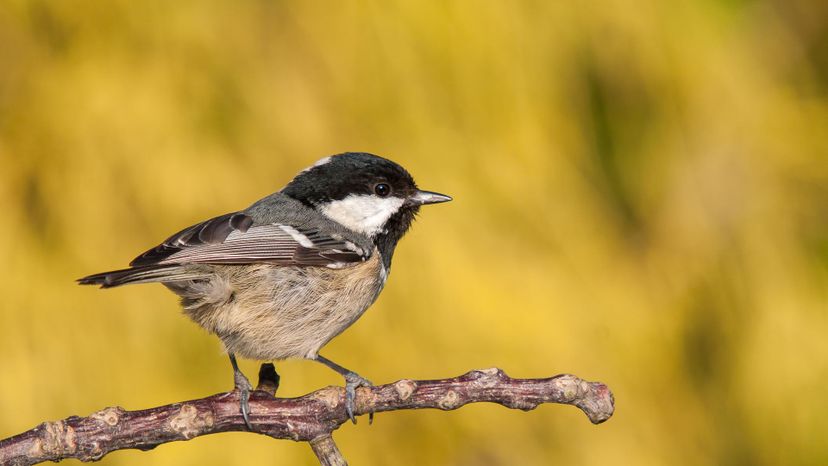
Shutterstock
Which bird corresponds with this image?
Yemen Linnet
Japanese Grosbeak
Coal Tit
The Coal Tit is one of Ireland's top twenty common garden birds. It is not as colorful as some of its other close relatives. The Coal Tit has a distinctive grey back, black cap, and white patch at the back of its neck.
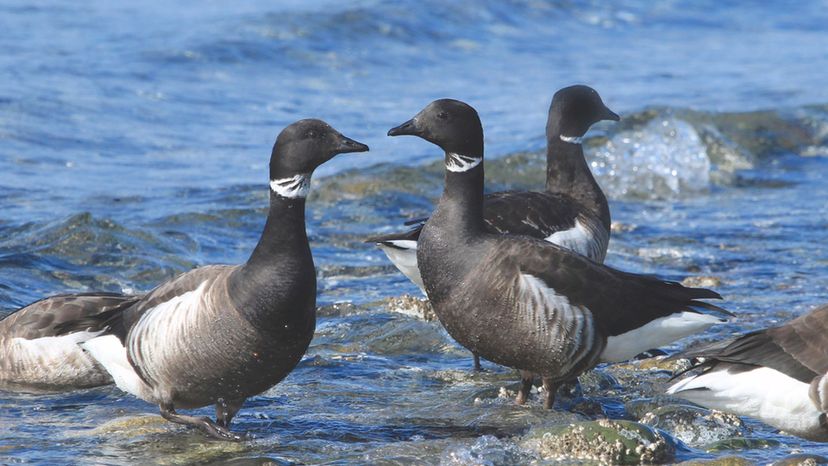
Shutterstock
Which bird corresponds with this image?
Black Brant
The Black Brant is a small goose of the ocean shores. The Brant breeds in the high Arctic tundra and winters along both coasts. The Brant from the Atlantic have light gray bellies and the Pacific Coast Brants have black bellies. At one point they were considered two separate species.
Palila
Akialoa
Advertisement
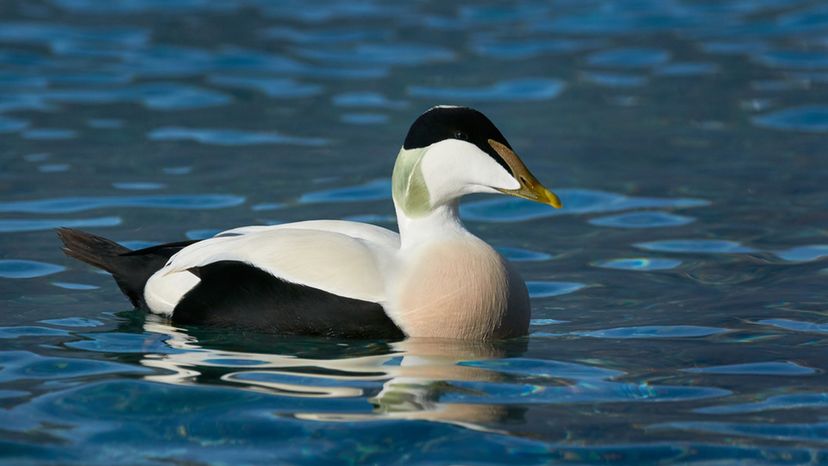
Shutterstock
Which bird corresponds with this image?
Maui Parrotbill
Eider
The Eider is a colorful duck of the northern seacoasts, and it is the largest duck in the Northern Hemisphere. Males have bright white, black, and green plumage, while the females are camouflaged in dull striped brown.
Little Bunting
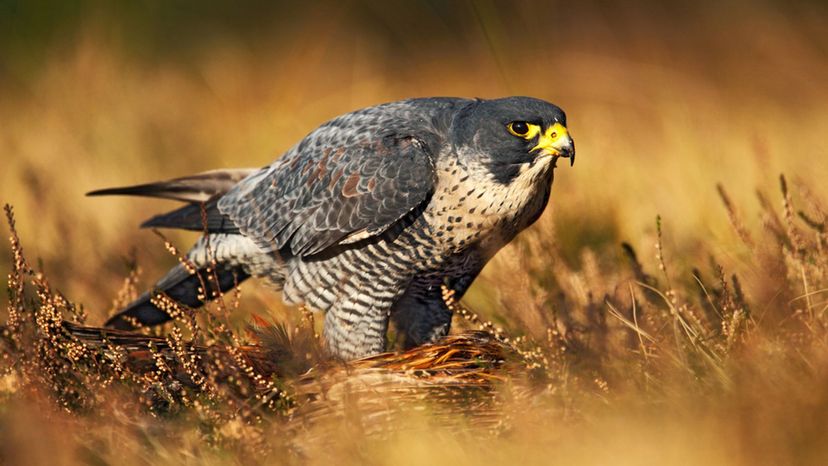
Shutterstock
Which bird corresponds with this image?
Pine Warbler
Peregrine
The peregrine falcon is quite large; it was known historically as the duck hawk in North America. The peregrine falcon's prey is plucked before consumption. The lifespan of peregrine falcons in the wild is up to 15.5 years.
Tepui Redstart
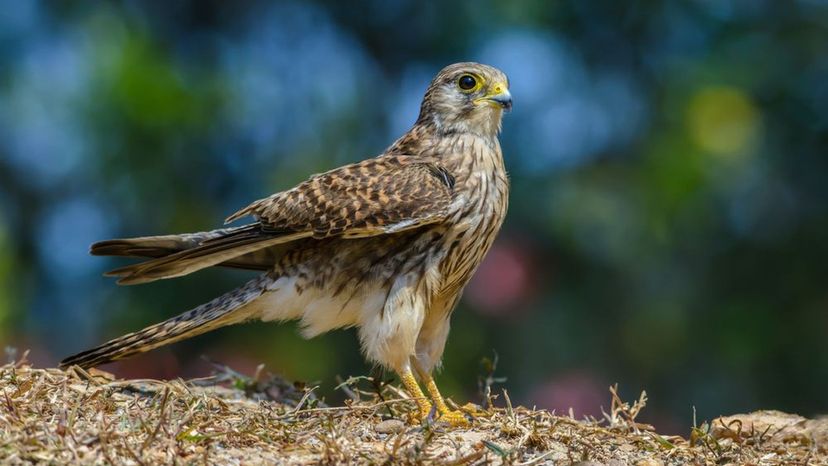
Shutterstock
Which bird corresponds with this image?
Chat Tanager
Drab Hemispingus
Kestrel
Country kestrels feed almost exclusively on small rodents, but those living in towns will take sparrows instead. Kestrels are Britain's most widely distributed bird of prey. They can be found breeding throughout the mainland and on many offshore islands.
Advertisement
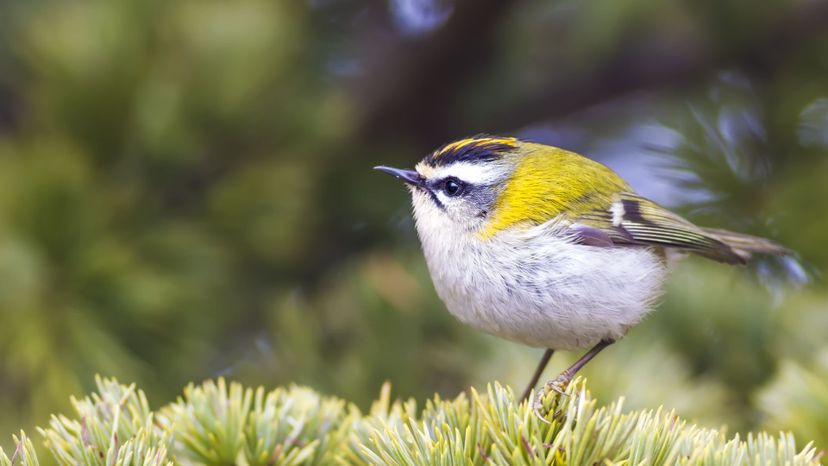
Shutterstock
Which bird corresponds with this image?
Firecrest
The Firecrest is is a very small passerine bird in the kinglet family. It breeds in most of temperate Europe and northwestern Africa. A fossil ancestor of the firecrest has been identified from a single wing bone. Firecrests in the Balearic Islands and North Africa are widely recognized as a separate subspecies.
Brazilian Tanager
Carmiol's Tanager
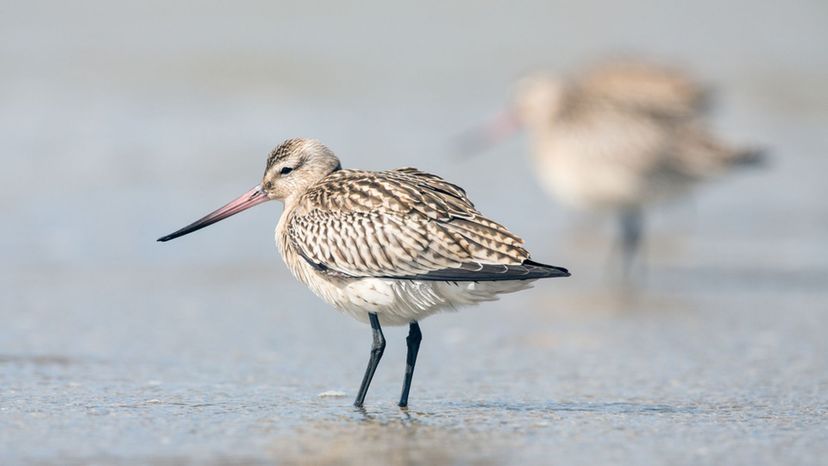
Shutterstock
Which bird corresponds with this image?
Bar-tailed Godwit
The bar-tailed godwit is a large wader in the bird family Scolopacidae. The genus name Limosa is from Latin and means "muddy." Its migration is the longest known non-stop flight of any bird and also the longest journey without pausing to feed by any animal.
Silver-beaked Tanager
Spot-crowned Euphonia
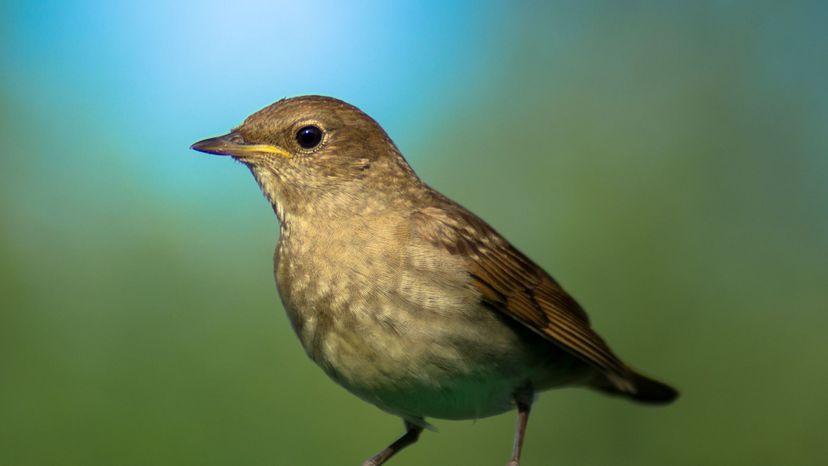
Shutterstock
Which bird corresponds with this image?
Grey Seedeater
Slender-billed Finch
Garden Warbler
The garden warbler itself is hunted by Eurasian sparrowhawks and domestic cats. Its eggs and nestlings are sought after by a variety of mammals and bigger bird predators. Its closest relatives outside the sister group are the African hill babbler and Dohrn's thrush-babbler.
Advertisement
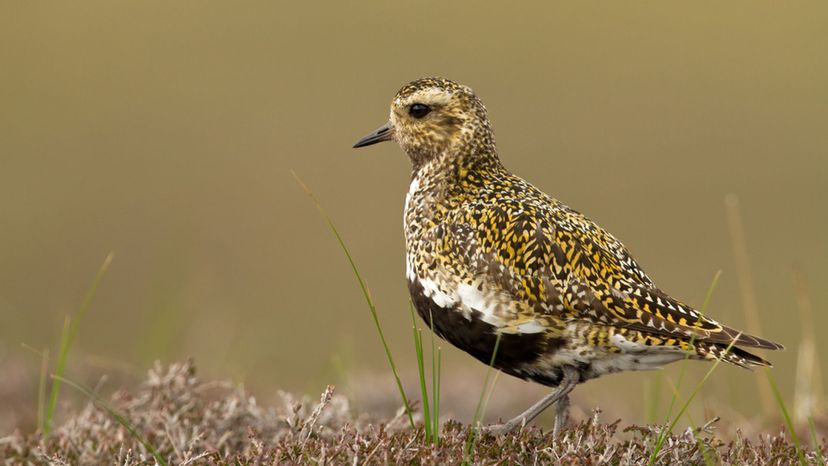
Shutterstock
Which bird corresponds with this image?
Dull-colored Grassquit
Greater Antillean Bullfinch
Golden Plover
The golden plover breeds in Alaska and Siberia and spends the winters on islands across the Pacific Ocean, through southeast Asia, and even as far as northeastern Africa. It is uncommon in North America. The oldest recorded Pacific golden plover was at least 21 years old.
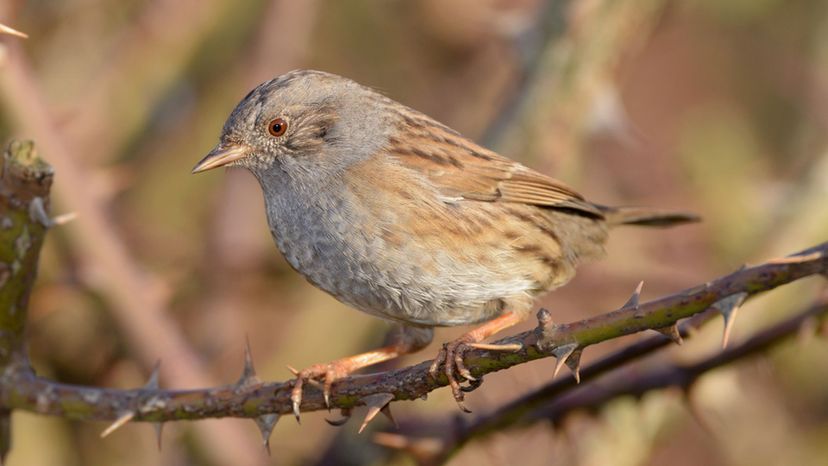
Shutterstock
Which bird corresponds with this image?
Large Ground Finch
Dunnock
The dunnock actually has three names - the dunnock, hedge sparrow, and hedge accentor. The fine bill is one of the ways of identifying the dunnock, but it is a hard bird to identify. The dunnock does not breed in pairs, but rather, in groups.
Dull-colored Grassquit
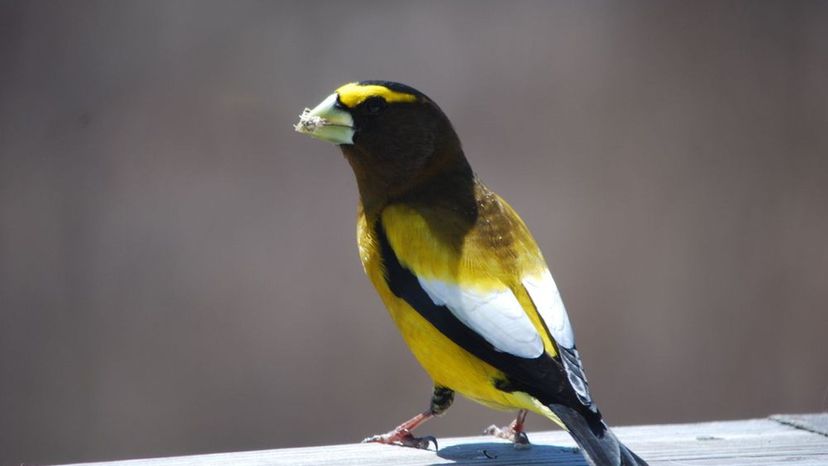
Shutterstock
Which bird corresponds with this image?
Yellow Grosbeak
The yellow grosbeak is a striking bird. The yellow-bodied and dusky-headed male has an imposing air, thanks to his massive bill and fierce eyebrow stripe. This species is declining and becoming uncommon, especially in the eastern United States.
Mangrove Finch
Buff-throated Saltator
Advertisement
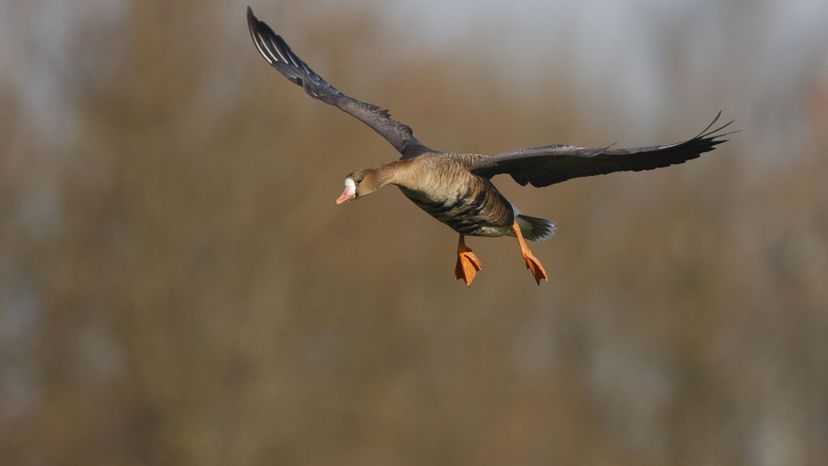
Shutterstock
Which bird corresponds with this image?
Yellow-billed Blue Finch
European White-fronted Goose
The European or greater white-fronted goose has one of the largest ranges of any species of goose in the world. The global range is thought to be between 1,000,000 to 10,000,000 kilometers. Greater white-fronted geese don't breed until they are around 3 years old.
Russet-backed Oropendola
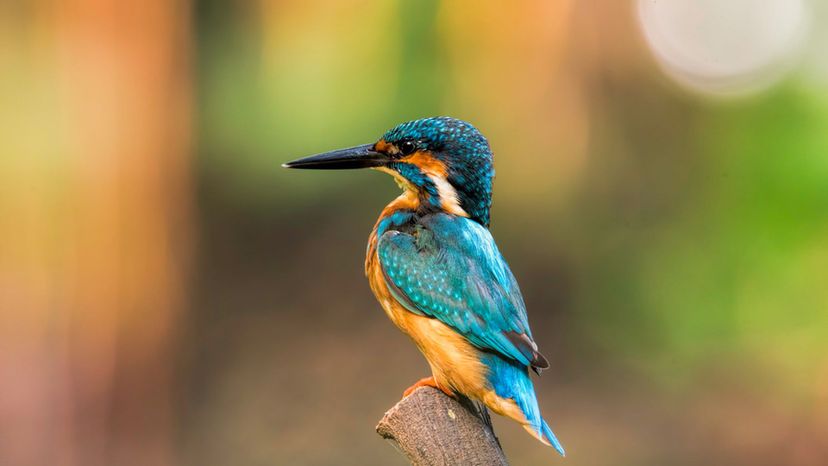
Shutterstock
Which bird corresponds with this image?
Red-rumped Cacique
Moriche Oriole
Kingfisher
There are 87 different species of kingfisher in the world, but only one, Alcedo atthis, that breeds in Europe. Many of the world's kingfishers don't eat fish and rarely go near the water. Severe winters can lead to as many as 90% of Britain's kingfishers dying in a given season.
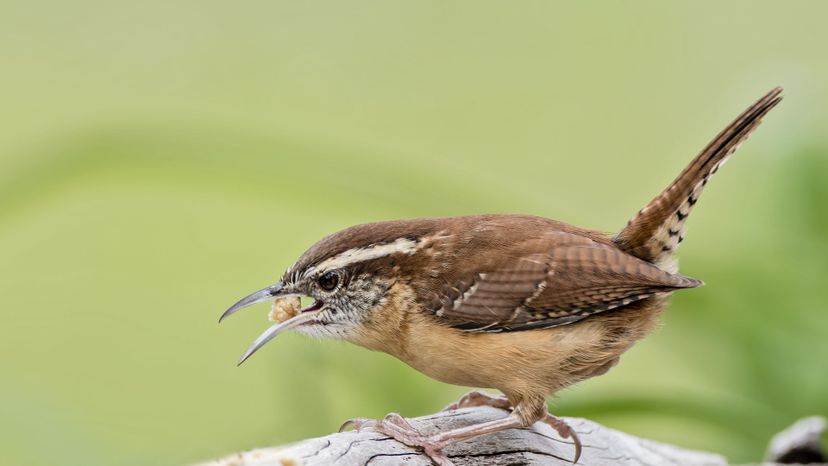
Shutterstock
Which bird corresponds with this image?
Bay-winged Cowbird
Red-bellied Grackle
Wren
The wren is the most common breeding bird in the UK, with 8.5 million breeding pairs. Wrens were first recorded in Anglo-Saxon times, although there is fossil evidence from the last Ice Age, 10-120,000 years ago.
Advertisement
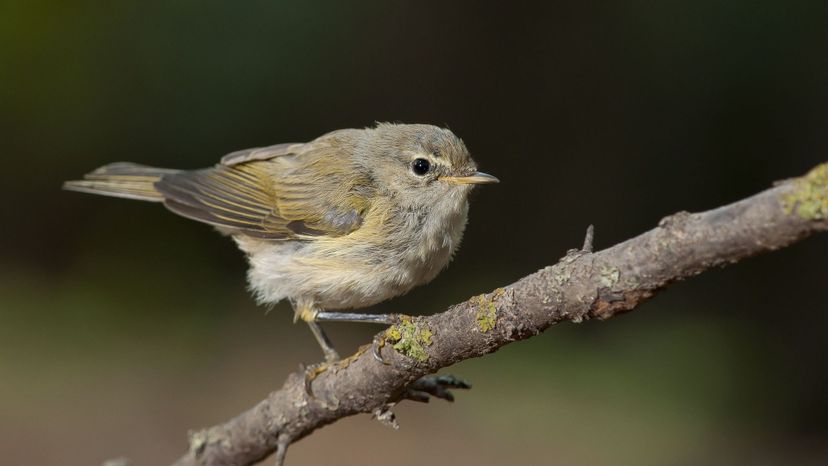
Shutterstock
Which bird corresponds with this image?
Chiffchaff
The chiffchaff is a short distance migrating bird and due to this has shorter wings than a Willow Warbler (which looks almost identical), giving chiffchaff an exaggerated stocky look. When searching for food, the chiffchaff will frequently dip its tail.
Bay-winged Cowbird
Bobolink

Shutterstock
Which bird corresponds with this image?
Nicaraguan Grackle
Marshbird
Snowy Owl
Snowy owls are diurnal, which means that unlike most other owls they are active and hunt during the day and night. The feathers of snowy owls have no pigment, leaving more space for air, which helps them to keep warmer because air is such a good insulator.
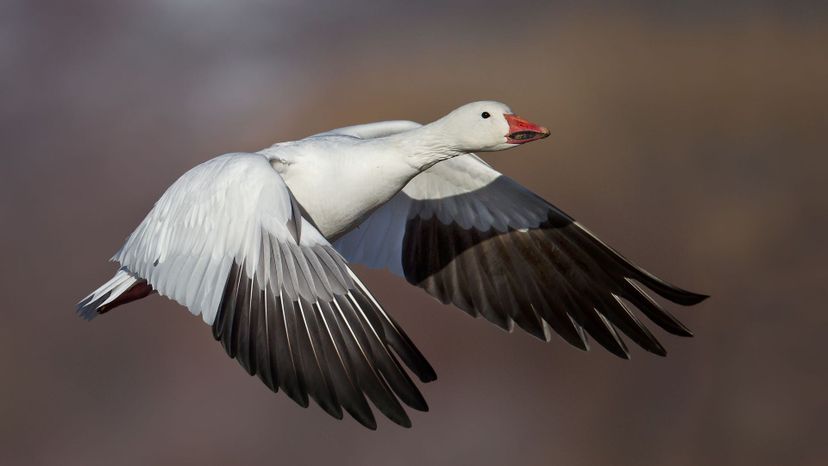
Shutterstock
Which bird corresponds with this image?
Western Meadowlark
Snow Goose
The oldest snow goose on record, shot in Texas in 1999, was 27 and a half. Young snow geese feed themselves but are protected by both parents. They remain with their family until they are 2 to 3 years old.
Marshbird
Advertisement
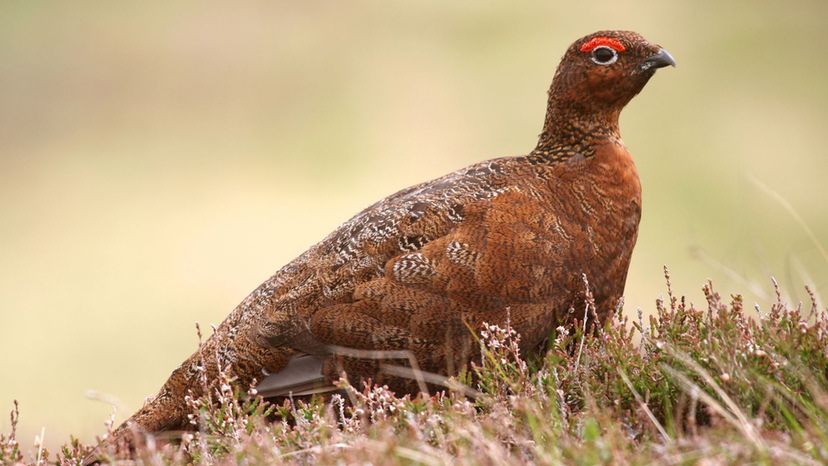
Shutterstock
Which bird corresponds with this image?
Whydah
Red Grouse
There are 18 different species of grouse. The red grouse is also called a prairie chicken. Kansas has more wild grouse than any other state in the US. Thanks to where they host pockets of feathers, grouse are among the few animals that can survive in Arctic regions.
Brambling
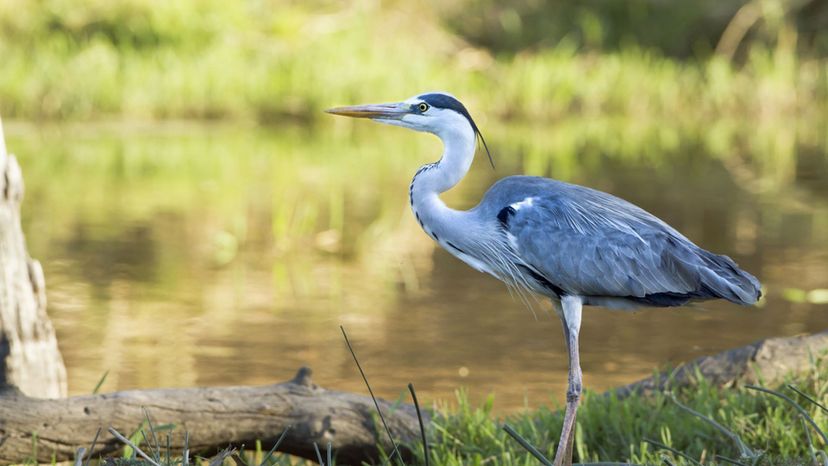
Shutterstock
Which bird corresponds with this image?
Finch
Serin
Grey heron
Heron comes from the French, for the French name is heron cendre. There was a story that if a heron was killed at full moon it could be a cure for rheumatism. It's not unusual for a single tree to hold as many as 10 grey heron nests.
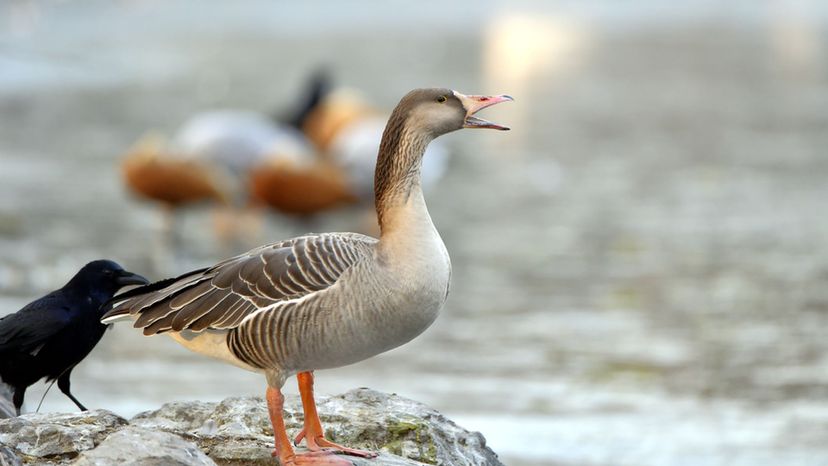
Shutterstock
Which bird corresponds with this image?
Bean Goose
During the breeding season, the bean goose can be located from Scandinavia across to the far eastern reaches of Asiatic Russia. The bean goose has similar features as a number of other geese, including the pink-footed goose and greylag goose. They primarily feed on grasses and mosses.
Canary
Warbler
Advertisement
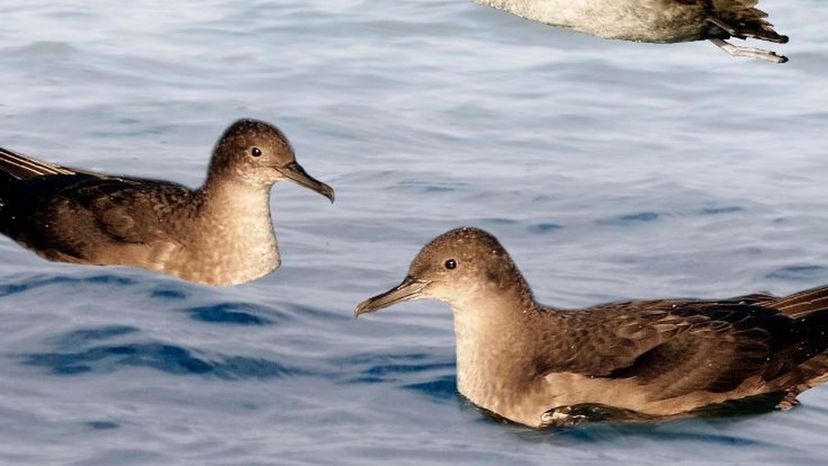
WikiCommons
Which bird corresponds with this image?
Golden-winged Grosbeak
Black-eared Seedeater
Balearic Shearwater
The Balearic shearwater is a medium-sized shearwater in the seabird family Procellariidae. The Balearic shearwater is classified as critically endangered, facing an extremely high risk of extinction in the wild.
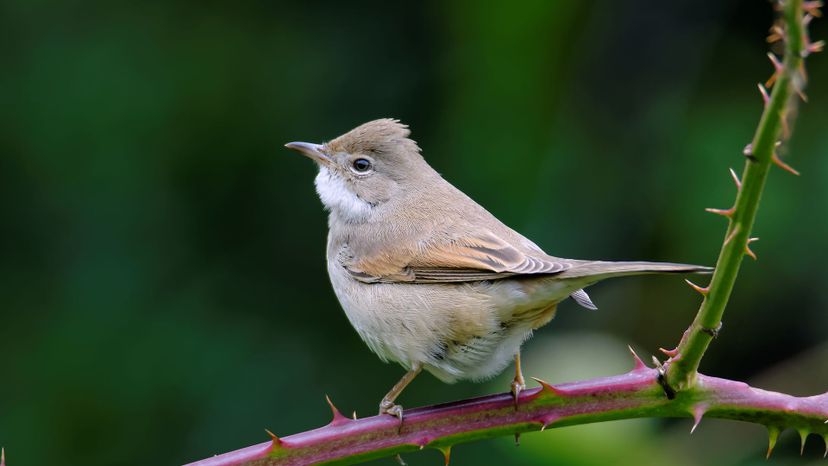
Shutterstock
Which bird corresponds with this image?
Whitethroat
The average whitethroat lives to be two years, but the oldest known whitethroat was seven years old. It was ringed in August 2002, then caught again in August 2009 at the same place. The male will build multiple nests for the female to choose from, and she will line the one that she likes best with fine grasses and hair.
Antillean Siskin
Hoary Redpoll
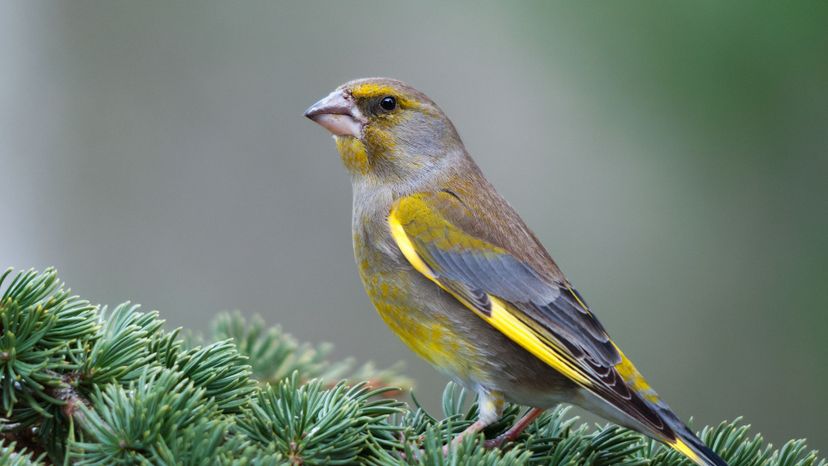
Shutterstock
Which bird corresponds with this image?
Greenfinch
Originally greenfinches were confined to areas of woodland or forest edges and rarely ventured out into farmland or human habitation. Greenfinches eat seeds. Their large bills allow them to eat a wide variety of seeds. They show some preference for seeds with fleshy fruits, such as rose hips.
Hoary Redpoll
Goldfinch
Advertisement
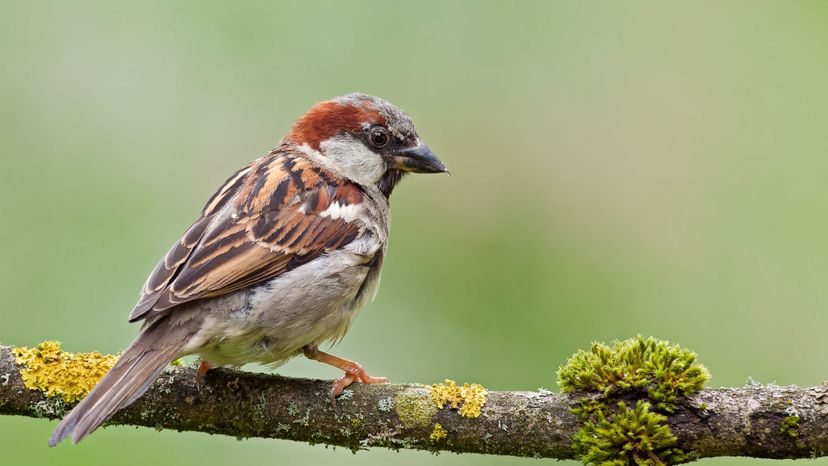
Shutterstock
Which bird corresponds with this image?
Yemen Linnet
House Sparrow
The house sparrow was one of Britain's most common birds, but numbers have crashed. London lost three-quarters of its sparrows between 1994 and 2000. They are very sociable birds, often found nesting in colonies.
Crossbill
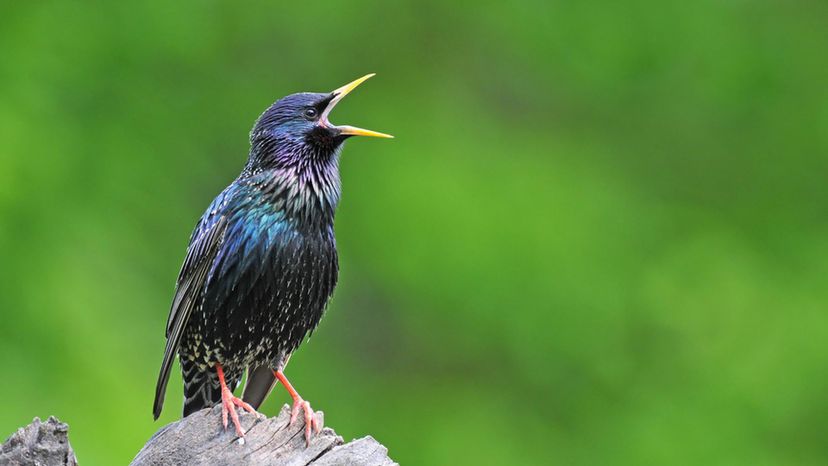
Shutterstock
Which bird corresponds with this image?
Crossbill
Starling
Starlings evolved to feed quickly in flocks. Because of this, they are considered greedy. While starlings appear black at a distance, close up they have glossy green and purple iridescent plumage. The starling population has undergone a long-term population decline throughout Europe.
Hawfinch
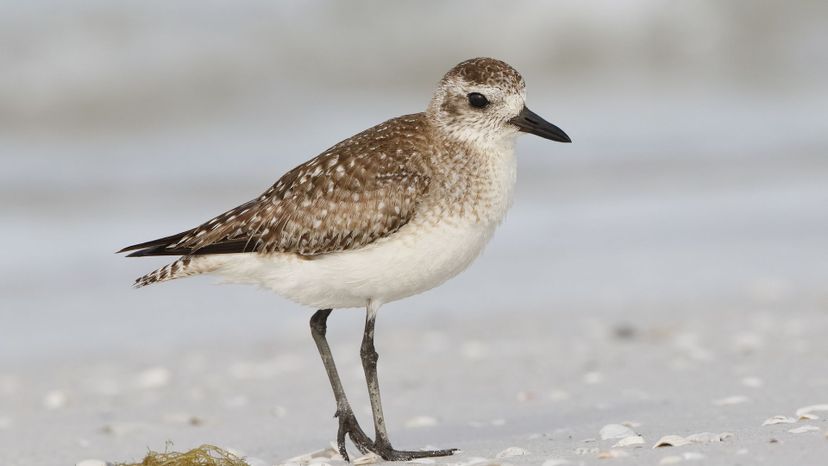
Shutterstock
Which bird corresponds with this image?
Hawfinch
American Plover
The American plover is a shorebird of pastures, open ground, and mudflats. It makes one of the longest migratory journeys of any shorebird. It breeds on the high Arctic tundra of Alaska and Canada and spends winters in the grasslands of central and southern South America.
Gold-naped Finch
Advertisement
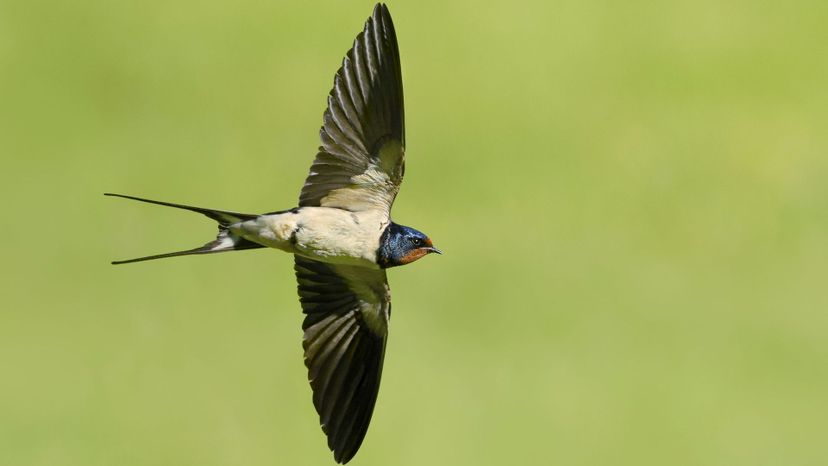
Shutterstock
Which bird corresponds with this image?
Swallow
Swallows belong to the family Hirundinidae, which also includes martins. There are 84 recognized species in the world. The barn swallow is the world's most widespread swallow. Swallows were much rarer before people started practicing agriculture and animal husbandry.
Kona Grosbeak
Palila
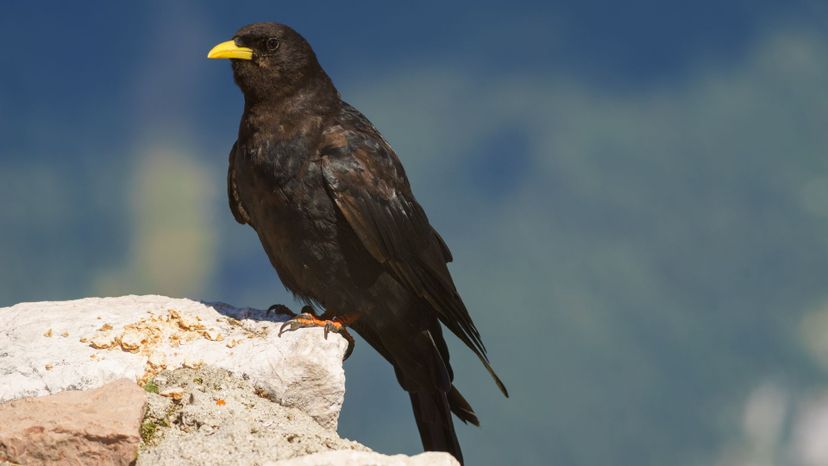
Shutterstock
Which bird corresponds with this image?
Chough
Natural enemies of red-billed choughs are the peregrine falcon, golden eagle, eagle-owl, and raven. Red-billed choughs use high-pitched, ringing calls for communication. They build nests on the sea cliffs or inside abandoned buildings, caves, and mine shafts.
Akohekohe
Kakawahie
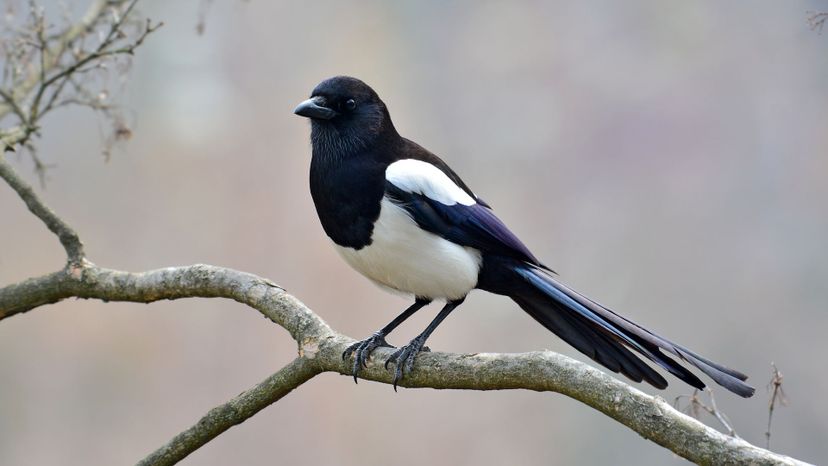
Shutterstock
Which bird corresponds with this image?
Kakawahie
Magpie
Magpie numbers in Britain and Ireland have quadrupled in the last 35 years. A magpie looks much bigger than it is: the tail makes up half the bird's length. Its average weight is only about half that of a wood pigeon. Long-eared owls often adopt old magpie nests.
Slaty Bunting
Advertisement
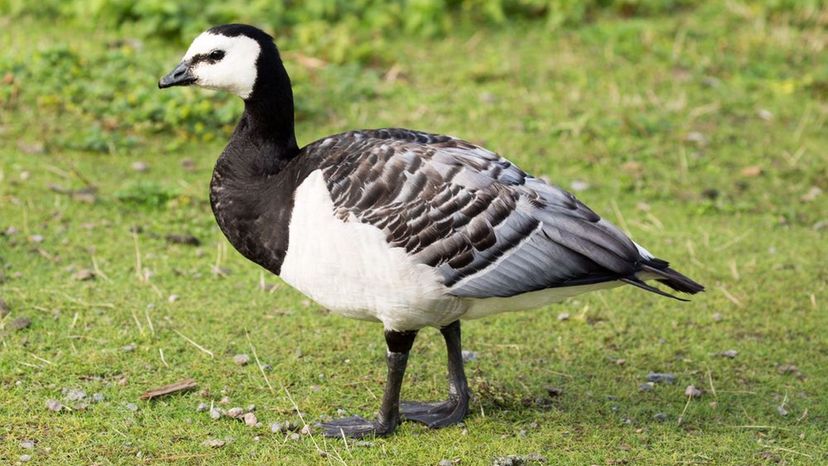
Shutterstock
Which bird corresponds with this image?
Barnacle Goose
The barnacle goose gets its name from people hundreds of years ago that used to think they were born from the crustaceans called barnacles. Barnacle goose chicks have one of the hardest starts in life of any baby animal in the world. They are born in nests on the top of cliffs to protect them from predators, such as Arctic foxes and polar bears.
Corn Bunting
Fox Sparrow

Shutterstock
Which bird corresponds with this image?
Eastern Towhee
Chaffinch
Cecil Rhodes, the founder of Rhodesia, introduced chaffinches to South Africa in 1898. They can still be found around the Cape today. Chaffinches were first introduced into New Zealand in 1862, initially becoming established in the Canterbury area.
Fox Sparrow
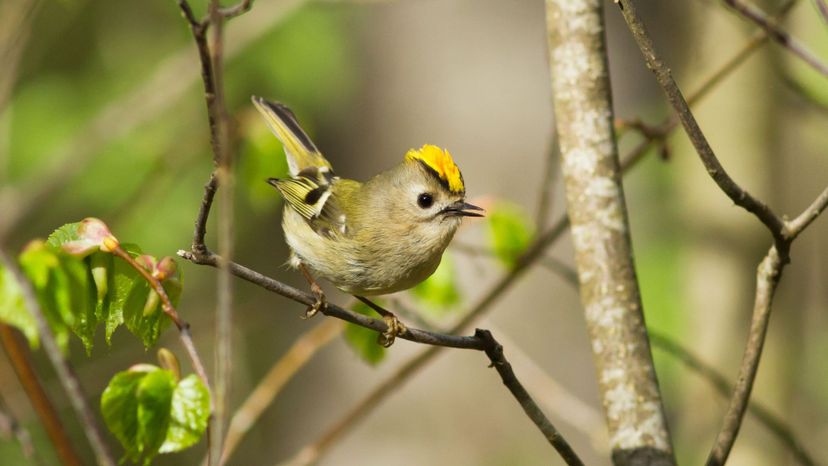
Shutterstock
Which bird corresponds with this image?
Goldcrest
The goldcrest is not only Britain's smallest bird, but also the smallest in the western Palearctic. The goldcrest's world range includes the Himalayas and Japan. They are almost exclusively insectivorous, with spiders forming an important part of the diet.
Colima Warbler
Yellow Cardinal
Advertisement
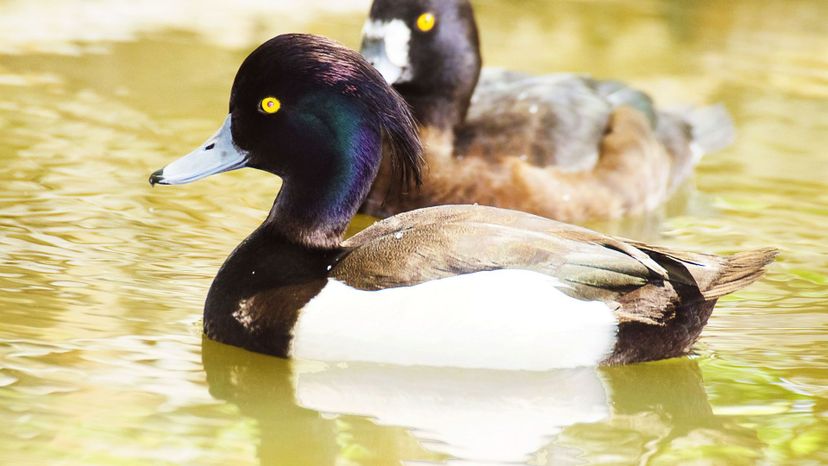
Shutterstock
Which bird corresponds with this image?
Tepui Redstart
Tufted Duck
Tufted ducks, scientifically called Aythya fuligula, are actually tufted. The drake (or male duck) has a more prominent crest than the female. Fuligula may derive from the Latin word fuligo, meaning soot. The drake has glossy black plumage on its head, breast, and back.
Mourning Warbler

Shutterstock
Which bird corresponds with this image?
American Robin
The American robin is a known carrier of the West Nile virus. The male and female look surprisingly similar, although if you look closely, the female is a bit duller than the male. Robins have a sweet tooth! Fruits, berries, sweet cakes, and even pastry dough are some of their favorites.
White-lored Warbler
Capped Conebill
You Got:
/50
Shutterstock